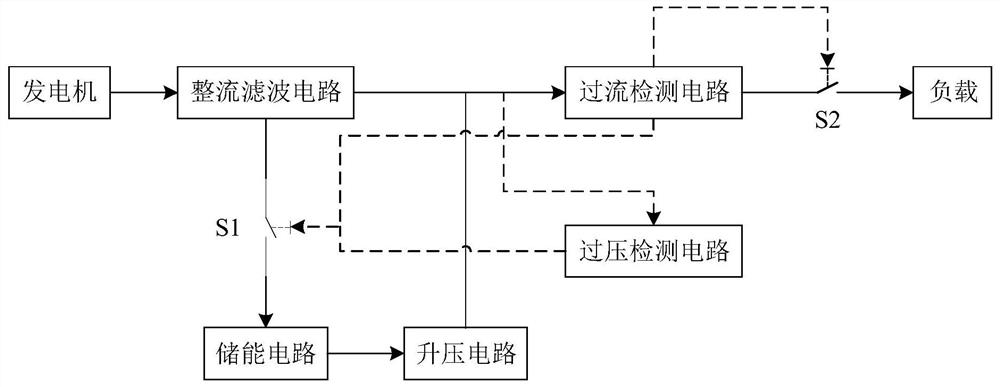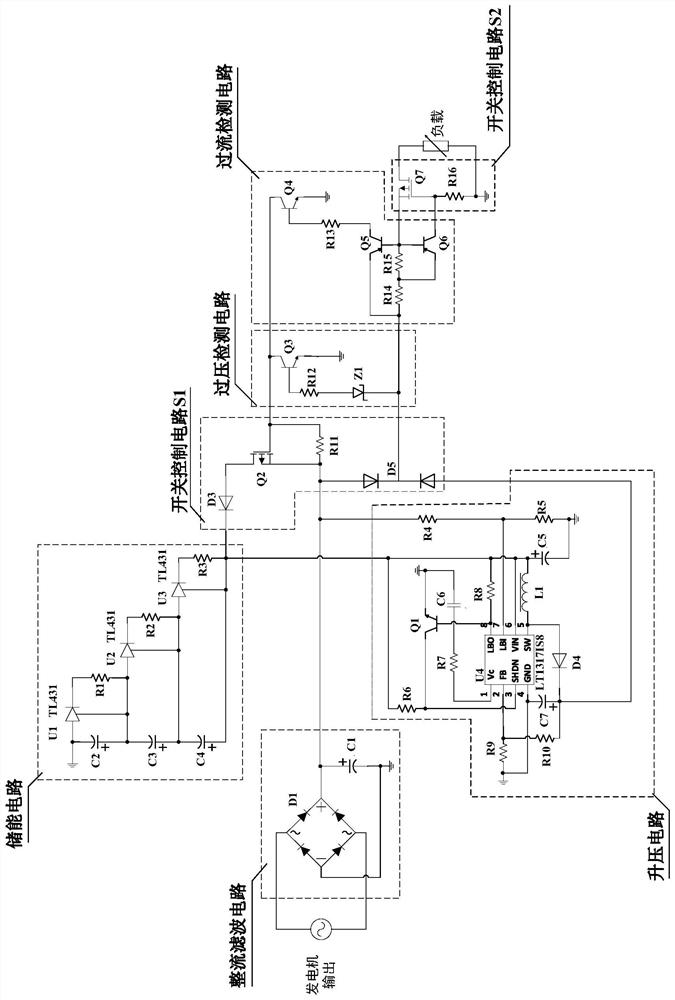Overflow energy storage type power supply circuit
A technology of power supply circuit and energy storage circuit, which is applied in the direction of electric energy storage system, generator/motor, electrical components, etc., and can solve the problem that the remaining kinetic energy is not fully utilized, the conversion efficiency is not high, and the subsequent circuit cannot work normally, etc. problem, to achieve the effect of short running time, prolonging power supply time and avoiding waste
- Summary
- Abstract
- Description
- Claims
- Application Information
AI Technical Summary
Problems solved by technology
Method used
Image
Examples
Embodiment Construction
[0012] The present invention will be described in further detail below in conjunction with the accompanying drawings.
[0013] An overflow energy storage type power supply circuit according to the present invention is adapted to a micro generator, including an energy storage circuit, a rectification filter circuit, a boost circuit, an overvoltage detection circuit, an overcurrent detection circuit, and a first switch control circuit S1 and the second switch control circuit S2.
[0014] Such as figure 1 As shown, the solid line represents the connection between the main circuits, and the dotted line represents the connection between the control circuits. In the main circuit, the output end of the generator is connected to the input end of the rectification filter circuit, and the output end of the rectification filter circuit is divided into two circuits, one is directly connected to the input end of the overcurrent detection circuit, and the other is sequentially passed throu...
PUM
 Login to View More
Login to View More Abstract
Description
Claims
Application Information
 Login to View More
Login to View More - R&D
- Intellectual Property
- Life Sciences
- Materials
- Tech Scout
- Unparalleled Data Quality
- Higher Quality Content
- 60% Fewer Hallucinations
Browse by: Latest US Patents, China's latest patents, Technical Efficacy Thesaurus, Application Domain, Technology Topic, Popular Technical Reports.
© 2025 PatSnap. All rights reserved.Legal|Privacy policy|Modern Slavery Act Transparency Statement|Sitemap|About US| Contact US: help@patsnap.com


